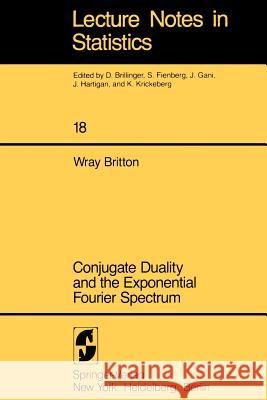Conjugate Duality and the Exponential Fourier Spectrum » książka
Conjugate Duality and the Exponential Fourier Spectrum
ISBN-13: 9780387908267 / Angielski / Miękka / 1983 / 226 str.
For some fields such as econometrics (Shore, 1980), oil prospecting (Claerbout, 1976), speech recognition (Levinson and Lieberman, 1981), satellite monitoring (Lavergnat et al., 1980), epilepsy diagnosis (Gersch and Tharp, 1977), and plasma physics (Bloomfield, 1976), there is a need to obtain an estimate of the spectral density (when it exists) in order to gain at least a crude understanding of the frequency content of time series data. An outstanding tutorial on the classical problem of spectral density estimation is given by Kay and Marple (1981). For an excellent collection of fundamental papers dealing with modern spec tral density estimation as well as an extensive bibliography on other fields of application, see Childers (1978). To devise a high-performance sample spectral density estimator, one must develop a rational basis for its construction, provide a feasible algorithm, and demonstrate its performance with respect to prescribed criteria. An algorithm is certainly feasible if it can be implemented on a computer, possesses computational efficiency (as measured by compu tational complexity analysis), and exhibits numerical stability. An estimator shows high performance if it is insensitive to violations of its underlying assumptions (i.e., robust), consistently shows excellent frequency resolutipn under realistic sample sizes and signal-to-noise power ratios, possesses a demonstrable numerical rate of convergence to the true population spectral density, and/or enjoys demonstrable asymp totic statistical properties such as consistency and efficiency."











